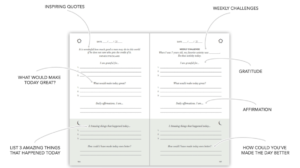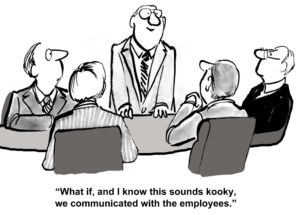Everyone has a manager/boss. Even if you are in business on your own, someone is out there plucking the puppet strings of your career. I work with a myriad of people who have incredible success and terrible issues with their manager. Some bosses are insane, some are saints, some are psychotic, and some are surprisingly normal.
One area I find where most people begin to see the cracks appear in their relationship concerns how they communicate with their manager.
Healthy, regular communication will always ameliorate any potential situation, ensure problems are addressed, and steps are taken in a reasonable amount of time.
Things go wrong when people forget two-way communication resembles a tug-of-war with a huge rope. When one side doesn’t communicate and pulls away, the other side needs to fill the void, take up the slack, and increase their communication.
So how do you do it? Here are some simple rules:
- Regular — schedule it on their calendar; meet with them (face to face) to discuss what’s happening.
- Short — make it a 10-15 minute meeting; the shorter, the better — focus on the tactical.
- Stick to business — cover what you’re working on and discuss next steps. Use an update sheet (1 page) to document what is discussed.
Here’s a great email/paper template I offer to my clients (Rule: Only 1 Page):
1. Accomplishments (from last week):
- Accomplishment 1 (keep each bullet point short)
- Accomplishment 2 (keep it less than 5-7 words)
- Accomplishment 3 (easy to scan)
2. Activities for this week:
- Project 1 (projects to be completed this week)
- Project 2
- Project 3
3. Long-Term Projects (in the near future):
- Project – Due Date (must have due dates)
- Project – Due Date
- Project – Due Date
4. Concerns & Issues:
- Issue 1 (talk about obstacles)
- Issue 2 (come with solutions)
- Issue 3
This template allows you to document your progress and ensure there are no crossed expectations about what you do and what your manager wants you to do. In addition, when you have 52 of these sheets in a binder, reviews go so much easier because you have a syllabus of accomplishments to choose from.
If you meet regularly with your manager (say weekly) for 10-15 minutes and use the recommended template, your relationship will strengthen and soar.
I've even suggested this template for attorneys to keep their clients up-to-date on their progress. It actually helps when their retainer runs out and the client asks 'what have you been doing?' — you now have a weekly documented process to bypass these uncomfortable conversations (and ultimately when you discount your fees because they're angry).
What do you use to update your manager/client on your progress?



